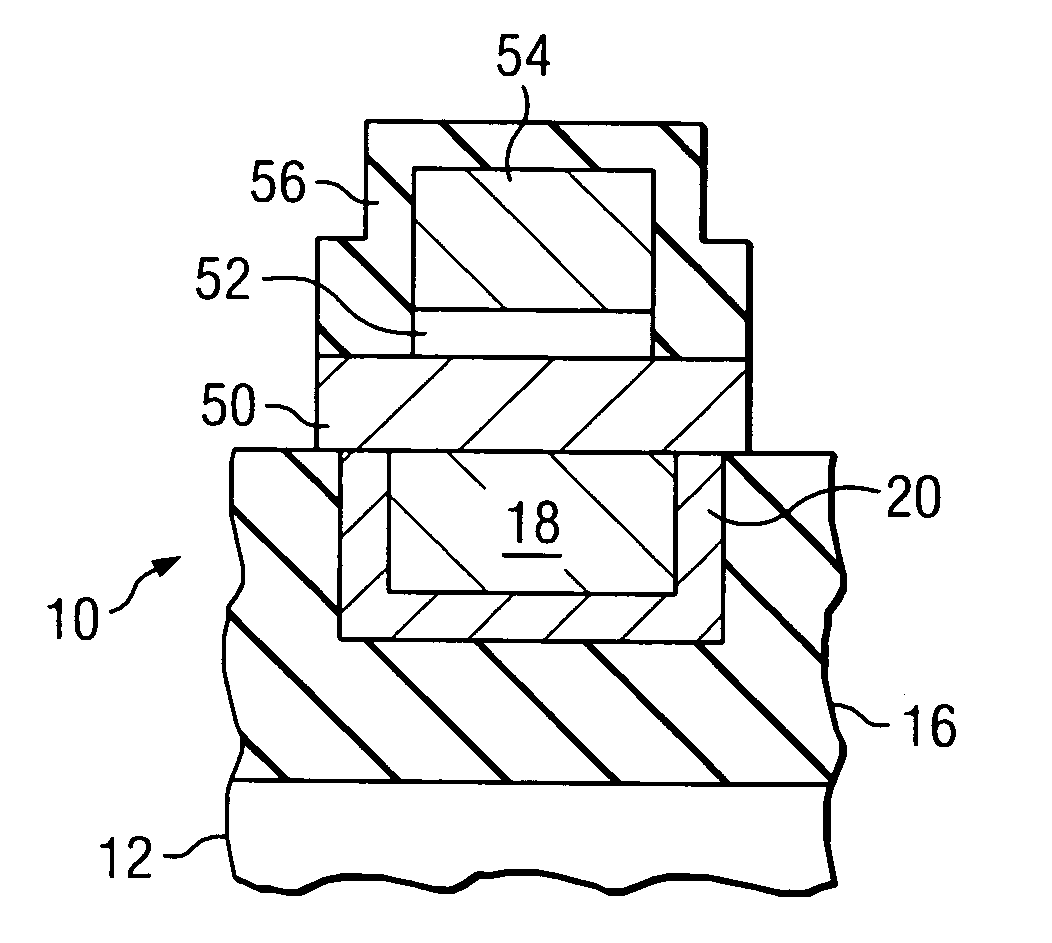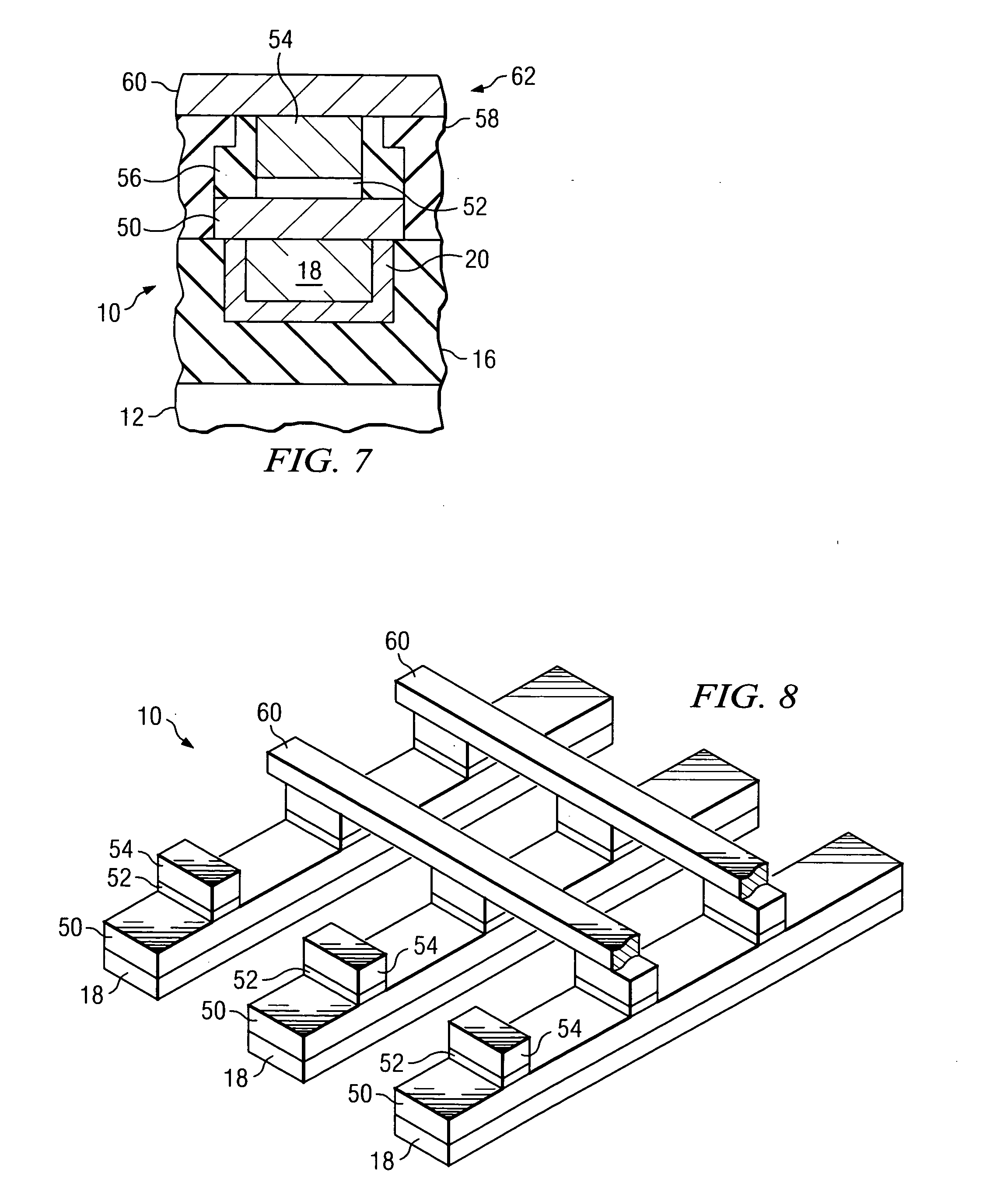Encapsulation of conductive lines of semiconductor devices
a technology of conductive lines and semiconductor devices, applied in the manufacture/treatment of galvano-magnetic devices, semiconductor devices, electrical apparatus, etc., can solve the problems of difficult direct patterning or etching of copper, difficult to use exposed copper lines and vias, and many of the more effective processing steps are simply too harsh to be used with such exposed copper lines. , to achieve the effect of reducing the effective dielectric constant and capacitance of the structure, reducing the surface temperature and reducing the s
- Summary
- Abstract
- Description
- Claims
- Application Information
AI Technical Summary
Benefits of technology
Problems solved by technology
Method used
Image
Examples
Embodiment Construction
[0017] The making and using of the presently preferred embodiments are discussed in detail below. It should be appreciated, however, that the present invention provides many applicable inventive concepts that can be embodied in a wide variety of specific contexts. The specific embodiments discussed are merely illustrative of specific ways to make and use the invention, and do not limit the scope of the invention.
[0018] The present invention will be described with respect to preferred embodiments in a specific context, namely an MRAM device. The invention may also be applied, however, to other semiconductor devices, and has particular useful application when magnetic materials are used as material layers, for example.
[0019] In U.S. patent application Ser. No. 10 / 610,609, filed on Jul. 1, 2003, entitled, “Recessed Metal Lines for Protective Enclosure in Integrated Circuits,” which is incorporated herein by reference, methods of recessing damascene conductive lines and filling the re...
PUM
 Login to view more
Login to view more Abstract
Description
Claims
Application Information
 Login to view more
Login to view more - R&D Engineer
- R&D Manager
- IP Professional
- Industry Leading Data Capabilities
- Powerful AI technology
- Patent DNA Extraction
Browse by: Latest US Patents, China's latest patents, Technical Efficacy Thesaurus, Application Domain, Technology Topic.
© 2024 PatSnap. All rights reserved.Legal|Privacy policy|Modern Slavery Act Transparency Statement|Sitemap



